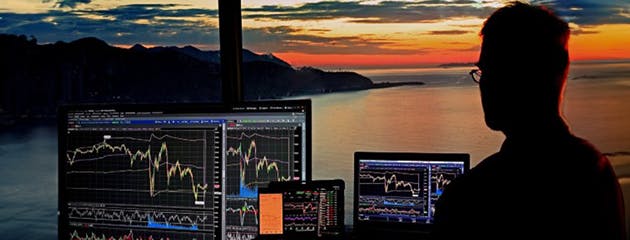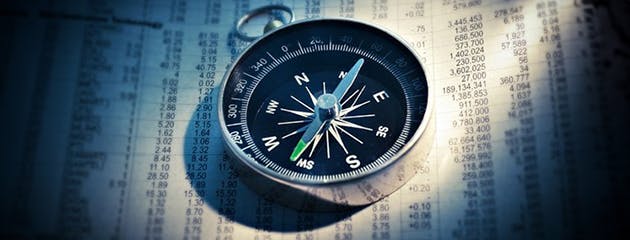This website uses cookies and is meant for marketing purposes only.

If you trade shares on the New York Stock Exchange, you must do so within normal business hours. However, when it comes to forex trading, your options open up considerably. Although the New York forex market times run only from 8 a.m. to 5 p.m. EST (Eastern Standard Time: the time along America’s east coast), the Tokyo session begins two hours after New York traders go home – at 7 p.m. – and runs until 4 a.m. It doesn’t end there because there’s also the London session – the most important of them all – which kicks off at 3 a.m. EST and rolls on until noon. As to the hours between 5 p.m. and 7.p.m, they’re far from being idle: Trading in Sydney runs from 5 p.m. all the way to 2 a.m. EST.
So it is that, after beginning at 5 p.m. EST on Sunday, the forex trading day never officially ends until 5 p.m. on Friday. On the one hand, this opens up more room to trade for all those around the world with tight schedules and limited free time on their hands. Since those pips of your favourite currency pair just keep on ticking, there’s hardly ever a time when you’ll be barred from reaping earnings from them, whether it’s early in the morning, late in the afternoon, or in the middle of the night. On the other hand, unlimited freedom of choice isn’t necessarily a good thing. An online trader would be liable to drive himself crazy if he treated each forex trading session with equal importance, setting his course based purely on the release of economic reports. There would be no end to his workday, and, aside from the dangers to his health, it’s likely he would end up overtrading to his own detriment.
Putting these perils aside, the reality is that all trading sessions are not made equal. More than that, each hour within a session does not enjoy the same status as every other. Even if you had limitless energy and funds, it wouldn’t make sense to trade constantly because the best opportunities to gain from forex action are only at certain known times. This article is aimed at helping you pinpoint those vital periods when surf is up in the forex market.
The orange-shaped planet on which we live revolves around a sun, but also continually rotates on its own axis, making for the alternating periods of day and night we experience. There is no place on earth where the day “naturally” begins, so we have to decide this on our own. Our convention is to draw an imaginary line – called the International Dateline – straight down the Pacific Ocean from north to south, somewhere between Los Angeles and Tokyo. Thus, according to our rules, it comes out that the “first” place on earth to see the new day arrive will be New Zealand.
It will follow that, of the three main forex trading centres on the globe – Asia, Europe, and North America – Asia will get the privilege of being called first, followed by North America and then Europe. We refer to these three sessions, going in order, as the Tokyo, New York, and London session because we prefer to use the terminology of capital cities than continents. It’s important to know that these three sessions make up the forex three-session system to which we are accustomed.
All of the above helps us practically in figuring out the best time of the day to trade forex. Since the ideal conditions for currency trading are when liquidity is high, what we’re really looking for is a time when the largest number of people are actively trading. This will keep our forex pips mobile and volatile, which is exactly what we like since it provides the greatest opportunity to harvest earnings. In addition to this, high liquidity translates into tighter bid-ask spreads on your currency pairs than low liquidity does, which is definitely a plus.
For a start, this means we are more interested in London than in its two peers in the three-session system. After all, about 40% of all global forex trades are made during the London session. This great city has traditionally claimed royal status in the forex market due to its central location between the Asian and American continents. Whatever the other reasons for its pre-eminence, the fact remains that trends in currency trading action tend to originate in London and then work their way to New York and elsewhere on the globe. Consequently, technical traders, who try to monitor price trends in the market, have special reason to keep an eye on what’s going in London, as opposed to its two counterparts. The sheer volume of forex trading during the London session makes it feasible to trade currency pairs of all kinds, even the less popular ones, since they’re bound to see substantial pip activity during that time.
At midday in London, when traders go for lunch, the volatility cools off until the New York session begins and they go back to work. It’s also common for price trends to halt or even reverse as the London session nears its end because traders are closing deals to lock in their earnings for the day. And then, from 7 p.m. to 10 p.m. EST, there’s a period when American traders are heading home for the night, the English are already safely in bed, and the Australians are just waking up from a night’s sleep. As a result, forex pips tend to be a lot less animated during those three hours.
At the times when two of the major forex session times overlap with each other, we have extra reason to plant ourselves in front of our computers and trade. If we know that not only the Londoners, but also the New Yorkers, are out there actively exchanging currencies, there will be even more liquidity and volatility than during the times when only the London session is going. This is why the period of the day between 8 a.m. and noon EST, when the London and New York sessions overlap, is by far the most popular time to trade forex. What propagates this dynamic even more is that the two most traded currencies of them all are America’s USD and Europe’s euro.
How big is the difference in pip fluctuations between a time when only one trading session is open, and a time when two are open simultaneously? It depends. If you’re dealing with the high-demand pairs like EUR/USD, GBP/USD, or USD/JPY, you should know that their pip movements are bigger in general, irrespective of overlaps. It’s also true that the London session stimulates greater pip movements in all currency pairs than either of the other two sessions. But, in answer to our question, it often happens that, while during a single trading session a currency pair gets stuck within a 30-pip range, that range can extend to over 70 pips when a second session gets underway.

When it’s March/April and October/November, forex session times are altered slightly due to daylight saving changes made in various parts of the globe. An exceptionally long two-hour gap expands the normal difference between US and Australian forex session times when Americans turn their clocks one hour back. The reason for this is that Australia adjusts its clocks one hour forward at the same time. Keep this in mind so you don’t find yourself confused by the pronounced difference between their respective forex market times.
The factors that move currencies are manifold and simultaneous, so it’s best to conceive the best forex market times in broader terms than, simply, hours of the day. As we’ve said, you should keep in mind the specific pair you’re dealing with but, beyond that, don’t forget about the power of news reports. Whether the session you’re in is one of the most popular or not, a good, juicy piece of news can change its character completely. In order to give a serious jolt to currency pairs, it would have to be a really significant news report. This could involve a central bank’s interest rate policy, a geopolitical event like a war, or a report on US retail consumption. In this matter, you will need to learn to distinguish among the tens of economic news events that occur every day and know which ones are likely to move prices.
We have gained an understanding of, not only which times of the day are best suited to forex trading, but also the reasons for the increased pip volatility that occurs during those times. One of the main advantages of having this knowledge is that it allows you to set limits on your working hours, so that you can get enough rest and live on a normal schedule. Aside from this, you stand ready to reap the benefits of the most volatile pip action in your pairs of interest. A mobile, liquid market is the most advantageous environment in which to trade. Finally, we have learnt the importance of remembering the simultaneous impact of news events on your currency trading. Keeping all this in mind will assist you in employing your trading strategy with the greatest possible impact.
The materials contained on this document should not in any way be construed, either explicitly or implicitly, directly or indirectly, as investment advice, recommendation or suggestion of an investment strategy with respect to a financial instrument, in any manner whatsoever. Any indication of past performance or simulated past performance included in this document is not a reliable indicator of future results. For the full disclaimer click here.
Join iFOREX to get an education package and start taking advantage of market opportunities.